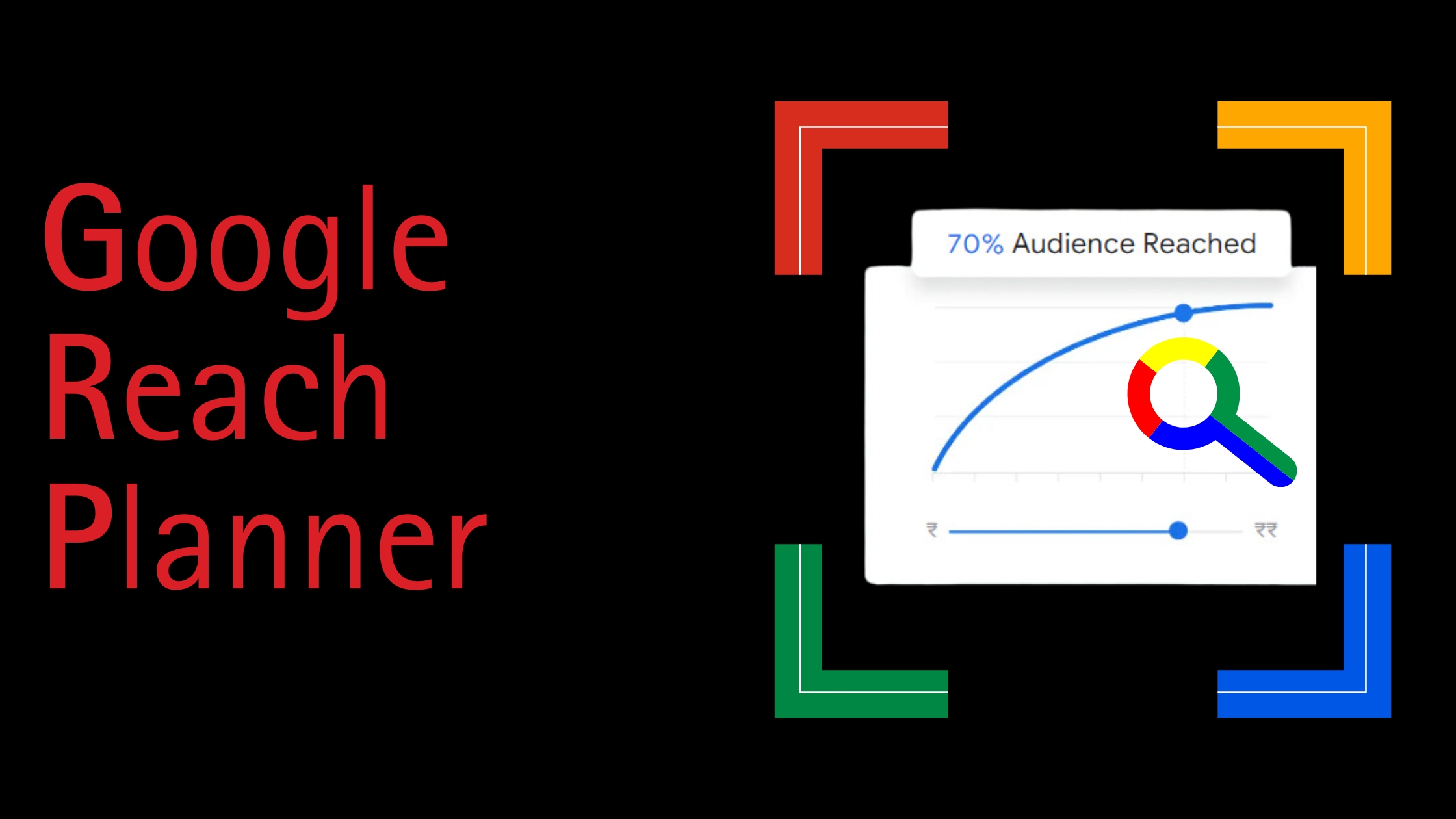You’re watching your competitors dominate paid search results while your ads struggle to get noticed. They’re capturing customers who should be finding your business instead. You know competitor campaigns could help, but you’re not sure how to do them ethically and effectively.
Competitor campaigns in paid search involve bidding on your competitors’ brand names and related keywords to capture their potential customers when they search for competing businesses. This strategy can increase your market share and brand awareness. Moreover, it’s a legitimate advertising tactic when done correctly and ethically.
Therefore, understanding how to run effective competitor campaigns can give you a competitive edge. Let’s explore proven strategies that help you capture more customers through strategic paid search campaigns.
What is A Paid Search?
Paid search is a form of online advertising where businesses pay to show their ads at the top of search engine results, like on Google or Bing.
When someone types a word or phrase (called a keyword) into the search bar, like “best running shoes”, businesses that want to appear for that keyword can pay to have their ad show up on the results page.
These ads usually appear above the regular (organic) search results and are marked as “Ad” or “Sponsored.”
Businesses only pay when someone clicks on their ad that’s why it’s also called pay-per-click (PPC) advertising. Paid search helps companies get more visibility, traffic, and potential customers quickly, especially when they’re competing with many others in the same industry.
What Are Competitor Campaigns in Paid Search?
Competitor campaigns target keywords related to your competitors’ brand names, products, or services in paid search advertising. When someone searches for your competitor, your ad appears alongside or instead of their results.
This strategy has been part of digital marketing since Google Ads launched in 2000. Courts have consistently ruled that bidding on competitor keywords is legal and acceptable business practice. Additionally, Google and other search engines explicitly allow this type of advertising.
Research from WordStream shows that competitor campaigns can reduce cost-per-click by 23% while increasing click-through rates by 15%. Furthermore, 85% of successful advertisers use some form of competitor targeting in their paid search strategies.
Why Should You Consider Competitor Campaigns?
Capture Market Share
Competitor campaigns help you intercept customers actively searching for your competitors. These searchers are already in buying mode and considering solutions in your industry.
Market share benefits include:
- Reaching customers who might not know about your business
- Positioning your brand as an alternative to competitors
- Increasing your visibility in competitive search results
- Capturing customers during their research phase
- Building brand awareness among competitor audiences
Studies show that 64% of consumers research multiple brands before making purchase decisions. Additionally, competitor campaigns can capture 10-30% of competitor-targeted traffic.
Cost-Effective Customer Acquisition
Competitor keywords often cost less than generic industry terms while delivering highly qualified traffic. You’re targeting people already interested in your type of product or service.
Cost advantages include:
- Lower competition for specific competitor brand terms
- Higher intent searchers who convert better
- More efficient ad spend allocation
- Better return on advertising spend (ROAS)
- Reduced customer acquisition costs
Research from SEMrush indicates that competitor campaigns typically have 20-40% lower cost-per-acquisition than broad industry campaigns.
Defensive Strategy Benefits
Running competitor campaigns protects your own brand from competitor attacks. If you don’t bid on competitor terms, you miss opportunities while they might bid on yours.
Defensive benefits:
- Understanding competitor advertising strategies
- Monitoring competitor messaging and offers
- Protecting your market position
- Learning from competitor ad copy and landing pages
- Staying competitive in paid search auctions
How Do You Research Competitor Keywords?
Identify Your True Competitors
Start by identifying who your real competitors are in paid search, not just in business generally. Online competitors might differ from offline ones.
Competitor identification methods:
- Search for your main keywords and see who appears in ads
- Use tools like SEMrush or Ahrefs to find advertising competitors
- Analyze who bids on your brand terms
- Monitor industry publications and trade shows
- Survey customers about alternatives they considered
Focus on 3-5 main competitors initially. Additionally, include both direct competitors and alternative solutions customers might consider.
Use Keyword Research Tools
Leverage specialized tools to discover competitor keywords and advertising strategies.
Essential keyword research tools:
- Google Keyword Planner: Shows search volumes and competition levels
- SEMrush: Reveals competitor ad copy and keyword strategies
- Ahrefs: Provides competitor advertising insights and keyword gaps
- SpyFu: Specializes in competitor PPC research
- iSpionage: Tracks competitor ad campaigns over time
These tools show which keywords competitors bid on, their ad copy, and estimated budgets. Moreover, they help identify gaps in competitor strategies you can exploit.
Analyze Competitor Ad Copy
Study your competitors’ ad messaging to understand their positioning and value propositions.
Ad copy analysis elements:
- Headlines and descriptions they use most frequently
- Unique selling propositions, they emphasize
- Calls-to-action and promotional offers
- The landing page experiences they provide
- Seasonal campaigns and messaging changes
Understanding competitor messaging helps you differentiate your ads. Additionally, you can identify weaknesses in their positioning to exploit.
What Types of Competitor Keywords Should You Target?

Brand Name Variations
Target different variations and misspellings of competitor brand names.
Brand targeting strategies:
- Exact competitor company names
- Common misspellings and typos
- Abbreviations and acronyms
- “Vs” and comparison terms
- Location-specific brand searches
For example, if targeting a competitor called “TechSolutions,” also consider “Tech Solutions,” “TechSolution,” and “TechSolutions reviews.” Additionally, include terms like “TechSolutions alternative” or “TechSolutions vs.”
Product and Service Names
Bid on specific products or services your competitors offer.
Product targeting approaches:
- Specific product names and model numbers
- Service categories they specialize in
- Proprietary technology or methodology names
- Popular features or capabilities
- Industry-specific solutions they provide
This strategy works especially well for software, technology, and specialized service companies. Furthermore, product-specific terms often have lower competition than brand names.
Comparison and Alternative Keywords
Target keywords that indicate people are comparing options or seeking alternatives.
Comparison keyword examples:
- “[Competitor] alternative”
- “[Competitor] vs [your brand]”
- “Best [competitor] competitors”
- “[Competitor] reviews”
- “Companies like [competitor]”
These keywords capture people actively evaluating options. Additionally, they often have high commercial intent and conversion rates.
How Do You Create Effective Competitor Ad Copy?
Focus on Your Unique Value Proposition
Highlight what makes your business different and better than the competitor.
Differentiation strategies:
- Emphasize unique features or benefits you offer
- Highlight superior customer service or support
- Mention better pricing or value propositions
- Showcase awards, certifications, or credentials
- Focus on specific advantages over the competitor
Avoid directly mentioning competitor names in ad copy, as this can violate platform policies. Instead, focus on your strengths and let searchers make comparisons.
Use Compelling Calls-to-Action
Create urgency and encourage immediate action with strong calls-to-action.
Effective CTA examples:
- “Try [Your Brand] Free Today”
- “Get Better Results with [Your Service]”
- “Switch and Save 30%”
- “Compare Features Side-by-Side”
- “Start Your Free Trial Now”
Strong CTAs increase click-through rates and conversions. Additionally, they help differentiate your ads from competitor messaging.
Highlight Customer Proof
Include social proof elements that build trust and credibility.
Social proof elements:
- Customer testimonials and reviews
- Industry awards and recognition
- Number of satisfied customers
- Years in business or experience
- Certifications and partnerships
Social proof is especially important in competitor campaigns because searchers are already considering another brand. Moreover, it helps overcome skepticism about switching providers.
What Are the Best Practices for Competitor Campaigns?
Respect Trademark Laws
Understand and follow trademark regulations in your jurisdiction.
Trademark compliance guidelines:
- Don’t use competitor trademarks in ad copy
- Avoid using competitor logos or branded imagery
- Don’t create confusion about brand ownership
- Focus on factual comparisons rather than misleading claims
- Consult legal counsel for complex trademark situations
In most countries, bidding on competitor keywords is legal, but using their trademarks in ads may not be. Additionally, policies vary between advertising platforms.
Create Dedicated Landing Pages
Design specific landing pages for competitor campaign traffic.
Landing page best practices:
- Address why visitors should choose you over the competitor
- Include comparison charts or feature matrices
- Provide clear next steps and conversion opportunities
- Match the messaging from your ads
- Include customer testimonials and case studies
Generic landing pages don’t convert well for competitor traffic. Furthermore, dedicated pages allow you to track campaign performance more accurately.
Monitor and Adjust Regularly
Competitor campaigns require ongoing optimization and monitoring.
Monitoring activities:
- Track competitor ad changes and new campaigns
- Adjust bids based on performance and competition
- Test new ad copy variations regularly
- Monitor competitor landing page changes
- Analyze conversion rates and ROI by competitor
Competitor strategies change frequently, so your campaigns must adapt. Additionally, regular optimization improves performance and reduces costs over time.
How Do You Structure Competitor Campaigns?
Separate Campaign Structure
Create dedicated campaigns for competitor targeting rather than mixing with other keywords.
Campaign structure benefits:
- Better budget control and allocation
- Clearer performance tracking and analysis
- Easier optimization and management
- More targeted ad copy and landing pages
- Separate bidding strategies for different goals
Separate campaigns also make it easier to pause competitor targeting if needed. Moreover, they provide cleaner data for performance analysis.
Ad Group Organization
Organize ad groups by individual competitors or competitor categories.
Ad group organization options:
- One ad group per major competitor
- Group similar competitors together
- Separate brand terms from product terms
- Create groups by competition level or priority
- Organize by geographic markets if relevant
Tight ad group organization improves Quality Scores and ad relevance. Additionally, it allows for more targeted messaging and bidding strategies.
Bidding Strategy Selection
Choose bidding strategies that align with your competitor campaign goals.
Bidding strategy options:
- Manual CPC: Full control over individual keyword bids
- Enhanced CPC: Automatic bid adjustments for better conversions
- Target CPA: Focus on cost-per-acquisition goals
- Target ROAS: Optimize for return on ad spend
- Maximize Clicks: Get maximum traffic within budget
Start with manual bidding to understand performance, then consider automated strategies. Furthermore, competitor campaigns often benefit from more aggressive bidding on high-value terms.
What Metrics Should You Track?
Performance Metrics
Monitor key performance indicators that matter for competitor campaigns.
Essential metrics to track:
- Click-through rate (CTR): Indicates ad relevance and appeal
- Cost-per-click (CPC): Shows competitiveness and efficiency
- Conversion rate: Measures how well traffic converts
- Cost-per-acquisition (CPA): Tracks customer acquisition costs
- Return on ad spend (ROAS): Measures campaign profitability
Compare these metrics to your other campaigns to assess relative performance. Additionally, track metrics by individual competitor to identify the most valuable targets.
Competitive Intelligence
Use competitor campaigns to gather market intelligence.
Intelligence gathering opportunities:
- Monitor competitor ad copy changes and messaging
- Track competitor promotional offers and pricing
- Observe competitor landing page improvements
- Identify new competitor products or services
- Understand competitor seasonal campaign patterns
This intelligence helps improve your overall marketing strategy. Moreover, it provides insights for product development and positioning decisions.
Brand Protection Metrics
Track how well you’re defending against competitor attacks on your brand.
Brand protection metrics:
- Impression share for your brand terms
- Competitor ads appearing on your brand searches
- Cost increases on your brand campaigns
- Brand search volume changes over time
- Customer feedback about competitor messaging
Strong brand protection prevents customer defection. Additionally, it maintains your competitive position in paid search auctions.
How Do You Handle Competitor Retaliation?
Expect Competitive Response
Prepare for competitors to respond to your campaigns with their own targeting.
Common competitor responses:
- Bidding on your brand terms in return
- Increasing bids on shared keywords
- Improving their ad copy and landing pages
- Launching defensive campaigns
- Escalating advertising spend in your market
Competitive response is normal and expected in paid search. Additionally, it often leads to better overall advertising for consumers.
Maintain Ethical Standards
Keep your competitor campaigns professional and ethical.
Ethical guidelines:
- Focus on your strengths rather than your competitor’s weaknesses
- Avoid false or misleading claims about competitors
- Don’t engage in trademark infringement
- Maintain professional tone in all messaging
- Compete on value rather than attacking competitors
Ethical campaigns build long-term brand reputation. Furthermore, they reduce legal risks and platform policy violations.
Focus on Long-Term Strategy
Build sustainable competitive advantages rather than just short-term gains.
Long-term competitive strategies:
- Improve your product or service quality
- Enhance customer experience and satisfaction
- Build stronger brand recognition and loyalty
- Develop unique value propositions
- Invest in innovation and differentiation
Paid search is just one part of a competitive strategy. Moreover, sustainable advantages come from genuine business improvements, not just advertising tactics.
What Common Mistakes Should You Avoid?
Over-Aggressive Targeting
Avoid bidding on every possible competitor keyword without a strategic focus.
Over-targeting problems:
- Spreading the budget too thin across many competitors
- Targeting irrelevant or low-value competitor keywords
- Ignoring campaign performance and ROI
- Creating too many ad groups and campaigns to manage
- Losing focus on your primary business goals
Focus on 3-5 main competitors initially. Additionally, prioritize keywords with commercial intent and reasonable conversion potential.
Neglecting Your Own Brand
Don’t focus so much on competitors that you neglect your own brand campaigns.
Brand neglect consequences:
- Higher costs for your own brand terms
- Competitors capturing your branded traffic
- Reduced brand visibility and awareness
- Lower overall campaign performance
- Missed opportunities for customer retention
Always prioritize your brand campaigns first. Furthermore, ensure adequate budget allocation for brand protection and growth.
Ignoring Legal Considerations
Understand and comply with relevant laws and platform policies.
Legal compliance areas:
- Trademark usage in ads and keywords
- Comparative advertising regulations
- Platform-specific policies and guidelines
- Industry-specific advertising restrictions
- International law variations in advertising globally
Consult legal counsel when in doubt about compliance. Additionally, stay updated on policy changes from advertising platforms.
Is Paid Search Worth It?
Yes, paid search can be worth it if it’s done right.
Paid search (like Google Ads) helps your business show up at the top of search results quickly, which can bring in more traffic, leads, or sales. It’s especially helpful if:
- You want fast results
- You’re launching a new product or service
- You’re in a competitive market
- Your website isn’t ranking well in organic search yet
But it’s not always a guaranteed success. It can get expensive if you’re not targeting the right keywords or if your ads aren’t set up properly. That’s why it’s important to have a smart strategy, a clear budget, and regular monitoring.For this, you can connect with Iynix Digital, we will build a proper plan for you.
Frequently Asked Questions
Is it legal to bid on competitor keywords in paid search?
Yes, bidding on competitor keywords is generally legal and accepted practice. However, using competitor trademarks in ad copy may violate trademark laws. Always comply with platform policies and local regulations.
How much should I budget for competitor campaigns?
Start with 10-20% of your total paid search budget for competitor campaigns. Adjust based on performance and competitive dynamics. Additionally, ensure you maintain an adequate budget for your own brand campaigns.
How do I know if mycompetitor’s campaigns are working?
Track metrics like cost-per-acquisition, conversion rate, and return on ad spend. Compare performance to your other campaigns and industry benchmarks. Additionally, monitor brand awareness and market share changes.
What should I do if competitors start bidding on my brand terms?
Increase your brand campaign budgets and improve your ad copy to maintain visibility. Consider bidding more aggressively on your own terms. Furthermore, focus on improving your overall value proposition and customer experience.
How often should I update my competitor campaigns?
Review competitor campaigns weekly for performance optimization and monthly for strategic adjustments. Monitor competitor activities regularly and adjust your campaigns when they make significant changes to their advertising strategies.


